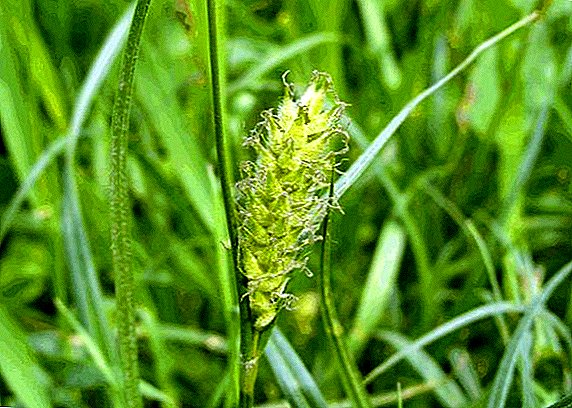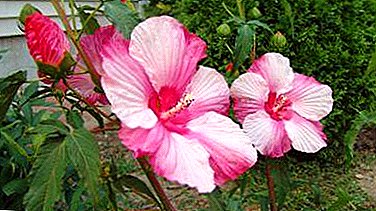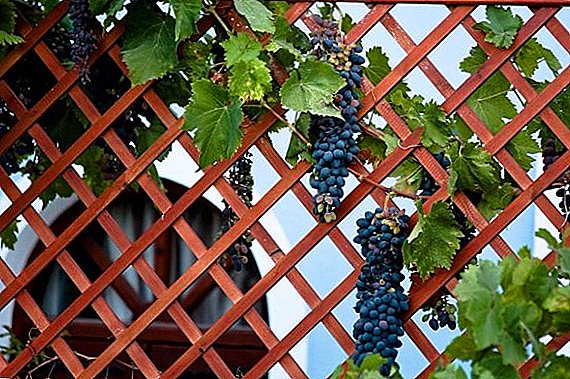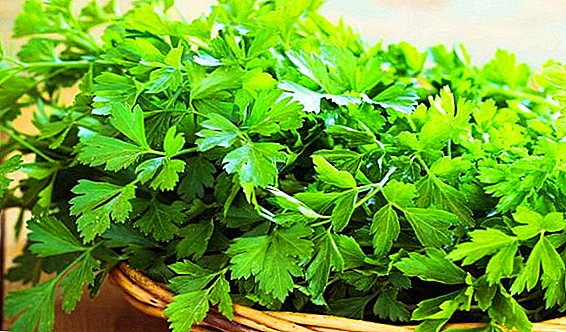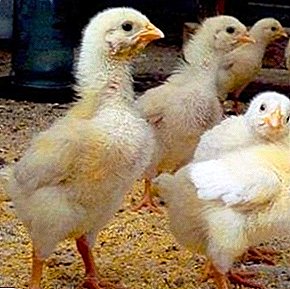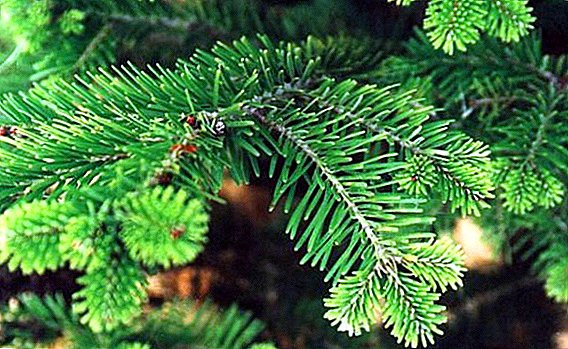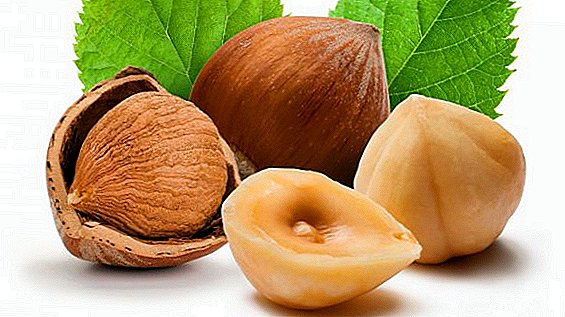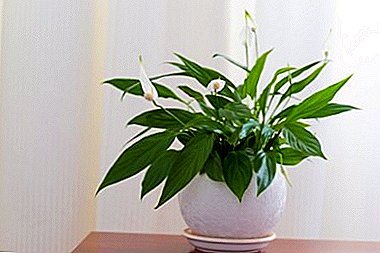
Spathiphyllum is a favorite plant of gardeners due to its unpretentiousness, aesthetic appearance and the ability to purify the air in the room.
In addition, an adult plant can easily be used as planting material for breeding at home. Consider how this beautiful flower breeds.
When can you multiply the flower "female happiness"?
 Like many other plants, the spathiphyllum has a growing season throughout the year, when the plant is actively growing. It falls on the period from April to September. If it is during this period that the spathiphyllum breeding is engaged, then the probability that the plant will endure more and more easily, and the parts taken for breeding, will adapt more quickly to the new environment.
Like many other plants, the spathiphyllum has a growing season throughout the year, when the plant is actively growing. It falls on the period from April to September. If it is during this period that the spathiphyllum breeding is engaged, then the probability that the plant will endure more and more easily, and the parts taken for breeding, will adapt more quickly to the new environment.
BUT from November to February, the plant is better not to touch, because at this time it is a period of rest, the development is temporarily suspended, the plant is resting from the active growing season.
But with special need, it is permissible to propagate the plant by cuttings or dividing the rhizome all year round, but seed reproduction is better postponed until spring.
Inventory preparation
High ceramic or wood pots are perfect. or other similar containers. You also need sharp scissors, but you can use a pruner. You need a glass or plastic bag to cover the seedlings, or a water tank to root the cuttings.
Step-by-step instructions: how to carry out the procedure?
There are only three ways of reproduction of this houseplant: cuttings, dividing the bush and seeds.
Seeds
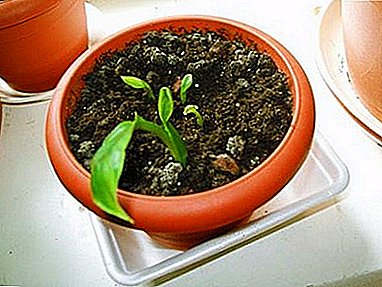 It is important to clarify right away: reproduction of spotifillum with seeds is a very painstaking process, since it is difficult to make an independent pollination of a flower to obtain seeds and, moreover, to carry out the necessary conditions for obtaining seedlings. Even half of the freshest seeds will not rise.
It is important to clarify right away: reproduction of spotifillum with seeds is a very painstaking process, since it is difficult to make an independent pollination of a flower to obtain seeds and, moreover, to carry out the necessary conditions for obtaining seedlings. Even half of the freshest seeds will not rise.
Procedure:
- At the bottom of the selected tank / pot to prepare drainage.
- Fill the remaining space with peat and sand soil (1: 1 ratio).
- Spread the seeds evenly over the substrate in the tank and sprinkle them a little with earth, no need to tamp!
- Cover the pot with glass or plastic bag to create a greenhouse effect.
- Place the seeds in a room with a temperature of 24 - 25 degrees.
- Condensate should be removed daily from the bag or glass, and the seeds ventilated.
- With the advent of the first leaves it is necessary to plant all the seedlings in different pots.
Important! Without daily ventilation in the pot, mold may appear, which will ruin the seedlings.
Cuttings
Cuttings are called leaf rosettes, which are young leaves near the base of a newly formed plant. There are two cases: when the roots are and when they are not. In the first case, the stalk is ready for planting in the ground.
The procedure for cutting:
- Place a drain on the bottom of the tank.
- Place in the pot process with rhizome.
- Sprinkle it with the substrate (composition described above).
- Water the plant with a moderate amount of water at room temperature.
When the stalk does not have a rhizome that has formed, it must be placed in water mixed with crushed into small chips with activated carbon and kept there until roots appear.
After that, you can follow the instructions above, but with some reservations: the soil should be from perlite, sphagnum moss and peat mossand for the time you need to create a greenhouse over the cutting, until it finally gets stronger. If necessary, can be transplanted into another container.
Next, a visual video about planting cuttings spathiphyllum:
Dividing bush
 This method is the simplest, most efficient and therefore very popular among florists. An adult plant can be quite easily divided into several parts, moreover, these parts already have a formed rhizome, unlike most cuttings used for these purposes.
This method is the simplest, most efficient and therefore very popular among florists. An adult plant can be quite easily divided into several parts, moreover, these parts already have a formed rhizome, unlike most cuttings used for these purposes.
Also bush dividing can be used to thin a very thick plant, for aesthetic reasons. The extra parts are just carefully cut off, and what needs to be left sits as described below.
Important! Reproduction by dividing the bush should take place at a temperature above 20 degrees at the very beginning of the growing season of spathiphyllum.
Procedure:
- Before the procedure, an adult plant must be watered in order to soften the earthen room.
- After removing the spathiphyllum from the pot, rinse the roots with water.
- Cut the rhizome with a sharp knife and sprinkle them with activated charcoal.
- If necessary, remove dried or rotted roots, leaves.
- At the bottom of the pot is laid drainage of expanded clay, which can retain enough moisture to moisten the roots.
- A part of an adult plant is placed in a container.
- The remaining space is filled with soil (you can use a mixture of peat and sand, or ready-made soil for aroid plants).
- The substrate must be moderately compacted.
- Produced by watering plants with a small amount of water.
You do not need to deeply deepen the basal neck of the flower, otherwise you can not wait for it to bloom at all.
We offer to see a visual video about the propagation of spathiphyllum by dividing the bush:
First care for a new plant
 A flower that has just been propagated will need diffused light., its thin young leaves will instantly get burns when exposed to direct sunlight, and newly propagated plants do not need any additional dressing.
A flower that has just been propagated will need diffused light., its thin young leaves will instantly get burns when exposed to direct sunlight, and newly propagated plants do not need any additional dressing.
The temperature in the room with a young Spathiphyllum should not fall below 23 - 25 degrees. Watering should be done as in adult plants: as the top layer of the substrate dries.
Possible problems and difficulties
Young spatiphyllums are extremely sensitive to the conditions in which they are located, unlike already grown plants.
- With a lack of lighting, the leaves of the plant will become dark green and elongated, and then it will completely stop its development. You can use additional artificial lighting.
- A young Spathiphyllum on a draft can completely die, since low temperatures are not recommended for it.
- On just formed leaves, dark spots may appear, signaling an excess of moisture or poorly prepared drainage layer.
- The lack of moisture will be followed by a very fast wilting of the flower.
- Due to the low moisture level, the leaves of the plant may start to dry.
Be that as it may, the propagation of spathiphyllum is a laborious process that requires patience. For beginners, reproduction by dividing a bush or cuttings is perfect, if you are especially careful, and for experienced flower growers who want to test their strength, seeds.


